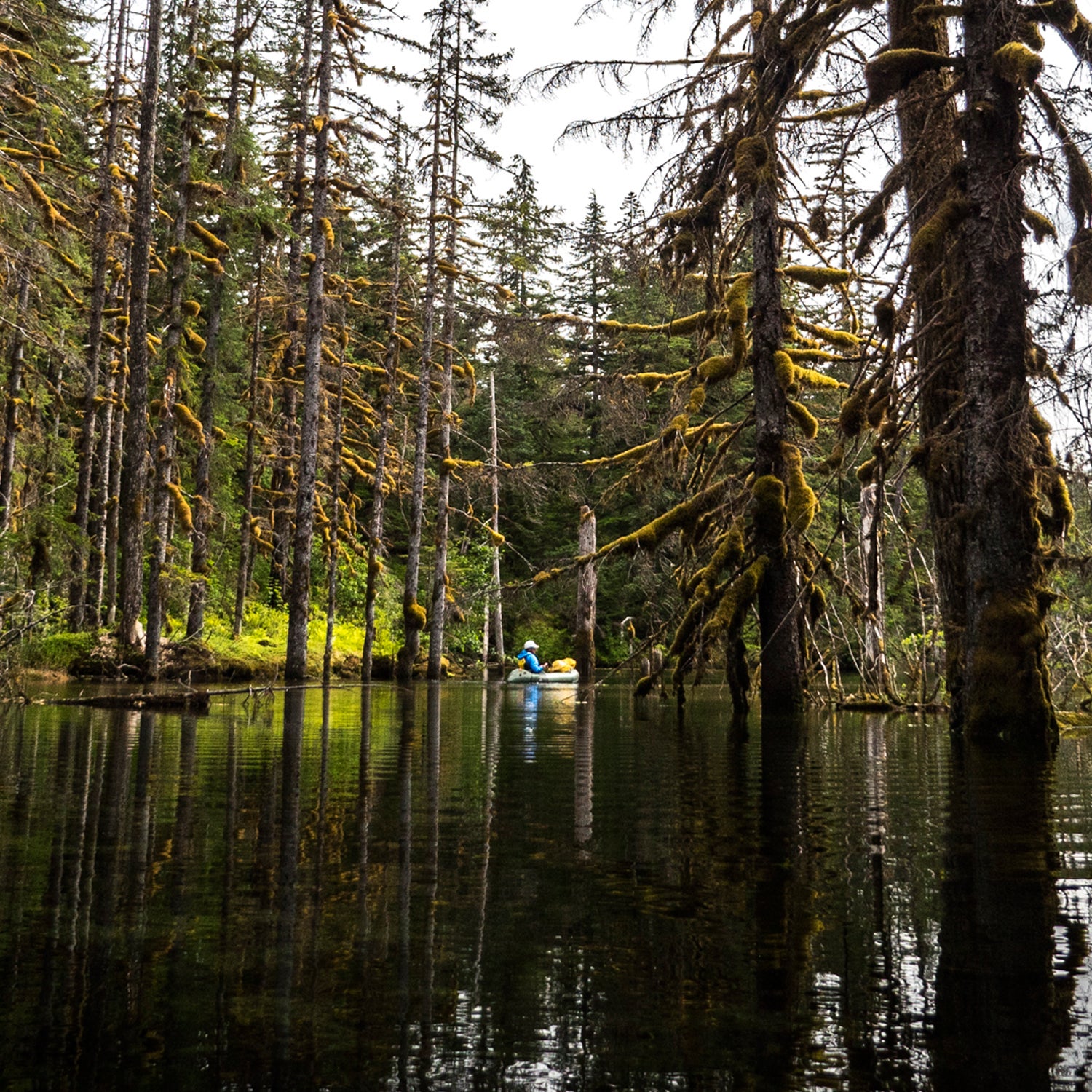In July, 2014, conservationists and adventurers Ryan Peterson, Travis Rummel, and Gordon Klco dropped into a mountainous fortress of old growth rainforest at the source of the Unuk River in British Columbia. Ten days and 100 miles later they floated into Burroughs Bay in Misty Fjords National Monument in Alaska having completed a first source to sea descent.
The expedition was undertaken as part of production for the short film, , which discusses the region’s transboundary rivers in light of an open-pit mining boom at their British Columbia headwaters. Downstream in Alaska, these rivers are the foundation of billion-dollar salmon and tourism industries, and residents are concerned over pollution risks posed to their economy and culture.
Here, Peterson walks us through a selection of the group’s images and highlights critical portions of the trip and this fragile region.��
Almost There
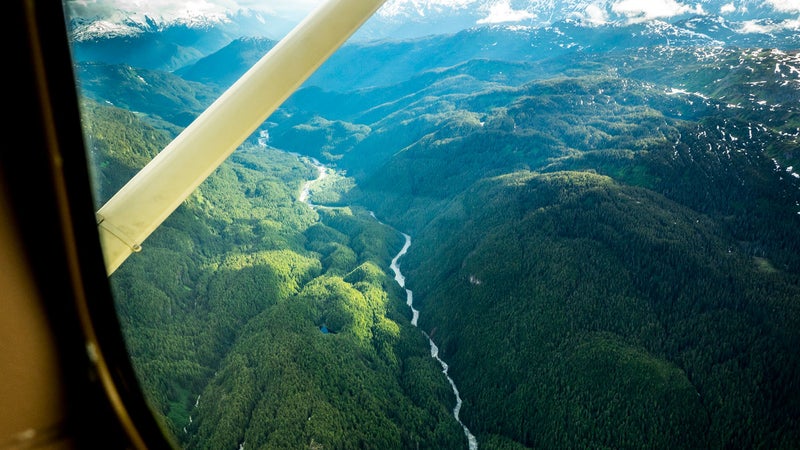
Pre-trip hopes for an all-water float trip were annihilated by aerial views of impassable waterfalls and logjams—we’d have to hike. As the cessna banked hard over the upper Unuk, Rummel filled his sick sack, portending a gnarly five-day bushwhack down the (left) ridgeline—a hellish maze of colossal deadfall, granite boulders, and thorny devils club under near-dark spruce and hemlock canopy.
The First Day
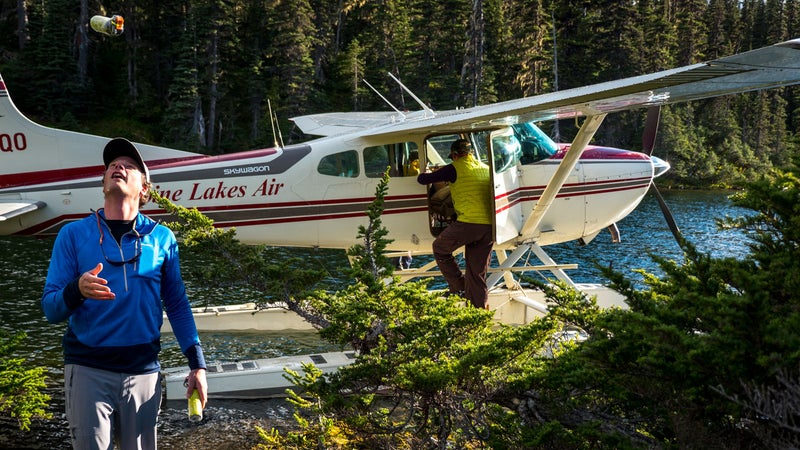
Pro Tip: If you’re headed into dense grizzly country and need to buy pepper spray, there is more paperwork involved with that in Canada than there is with buying a gun in the U.S.��
Journal Entries: July 10-11
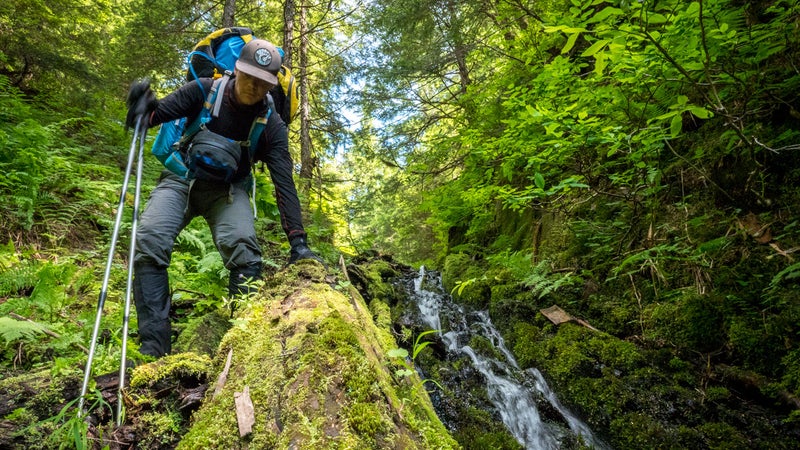
��
- Forested ridge. Tiring. Sloggy. Pain. Bugs. Deadfall. Hot. Bugs. Snow patches. Bugs.
- Managed all day 2 miles.
- This valley doesn’t cater to boating, or walking, or anything at all really. It doesn’t cater to human existence.
Journal Entries: July 12-13
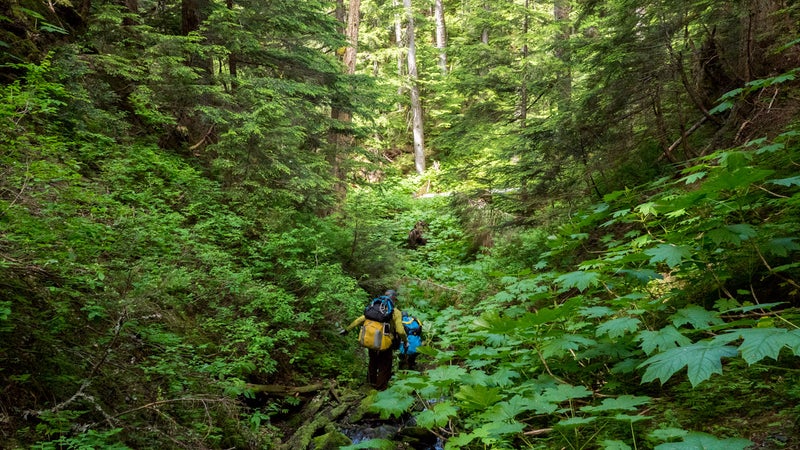
��
- Early start. Morning moon. Bird sounds.
- Hope bowels hold after filtering water from mosquito bog with sheen on it.
- Final slot canyon an easy get-down to river. A gift. A valley so green and beautiful it “obliterates memory.” (Wade Davis quote about Amazon.)
July 14, Day Six
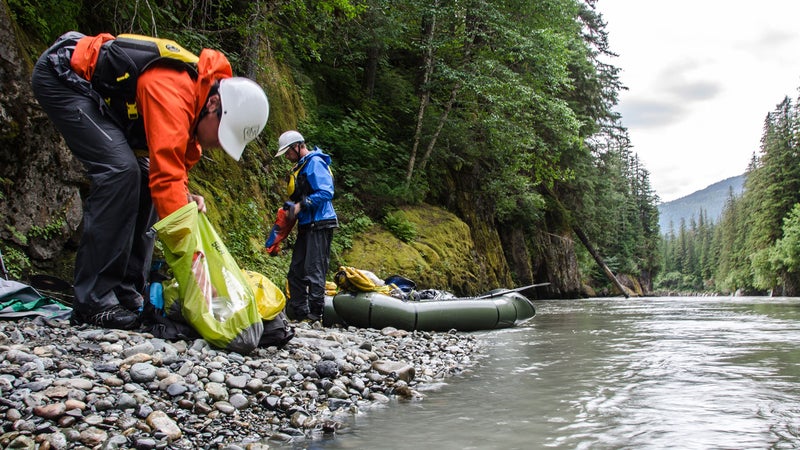
It was sighs and high fives when we reached the river on day five. What looked on Google Earth to be a casual splash and giggle turned out to be a full-on psychological thriller, with intense velocity and hydraulics pounding us everywhere toward wood and rock. Our nine-pound Alpacka Rafts were the tool for the job, allowing for nimble movement over land and water, but contact with terra firma (especially canyon walls made of sharp lava) was not an option given that they pop. Thankfully, Klco’s next-level whitewater skills carried us through with nothing more than frayed nerves.
July 15, Day Seven
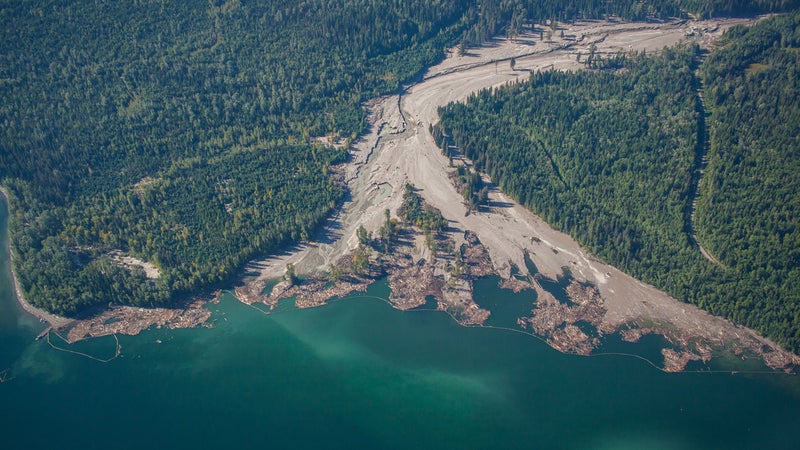
Ninety percent of the Unuk’s rich salmon habitat is in Alaska. Meanwhile, upstream on the B.C. side, the largest open-pit copper and gold mine in North America, Kerr Sulphurets Mitchell (KSM), has been approved by the Canadian government. The developer Seabridge Gold is currently seeking a major investor to finance operations.
July 15, Day Seven

The Unuk’s two veiled canyons formed where the river has cut through ancient lava floes. Hundreds of miniature waterfalls pour forth from their walls, evidence of the rainforest’s spidery subterranean aquifer. Rummel, Klco, and I have been on many far-flung expeditions in pursuit of our happy sports—fishing, paddling, climbing, and skiing—but we’d come to the Unuk for the sole purpose of observation. In so doing, beauty here felt magnified by serendipity.
July 16, Day Eight
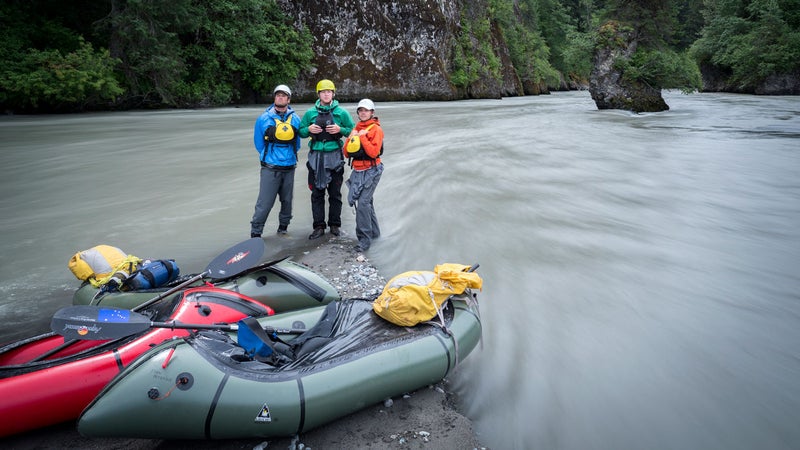
Ten days of ultralight travel and camping left us in awe of the aboriginal people of the region, who until the arrival of modern commerce used the Unuk as a trading corridor between coastal and interior tribes. A commodity of particular value was the Unuk’s eulachon, a small fish so rich in oil you can dry and light it with a match. Many in Alaska and B.C. still regard the river’s crossing of the border as culturally and biologically meaningless.
July 16, Day Eight
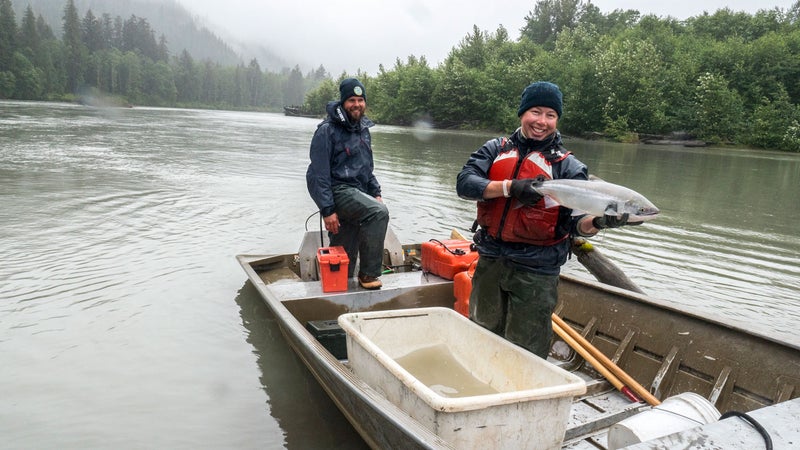
On day eight, just above tidewater at river mile 90, we floated around a corner to find Alaska Department of Fish and Game technicians working on a salmon study. They were the first and only people we saw on the expedition, and seemed as shocked as we were by the encounter. Here they prepare to release a sockeye salmon back into the Unuk.
July 17, Day Nine
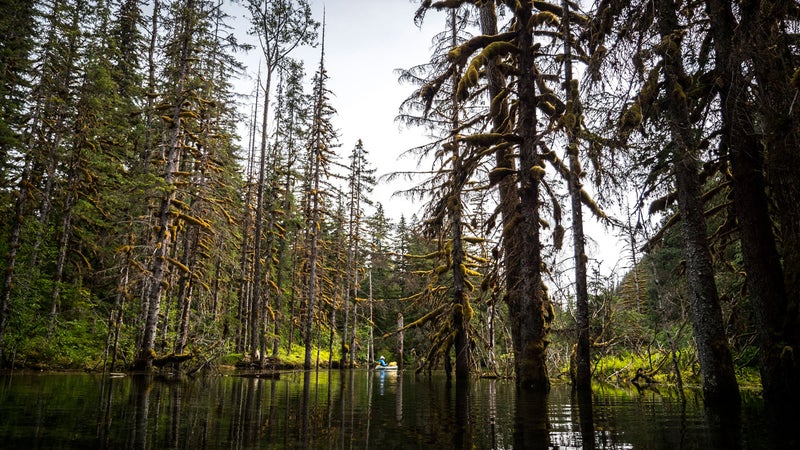
While the KSM mine would make a lot of money for a few people in Canada, Alaskans downstream see risk. Chief among their concerns is the engineering challenge of containing the toxic chemical byproducts that result when billions of tons of dug-up earth are exposed to air and rain. History proves that despite assurances and best laid plans, gravity almost always pulls this acid mine drainage into the watershed below a mine. The wetter and more seismically active the place, the harder it is to contain them.
July 19, Day Eleven
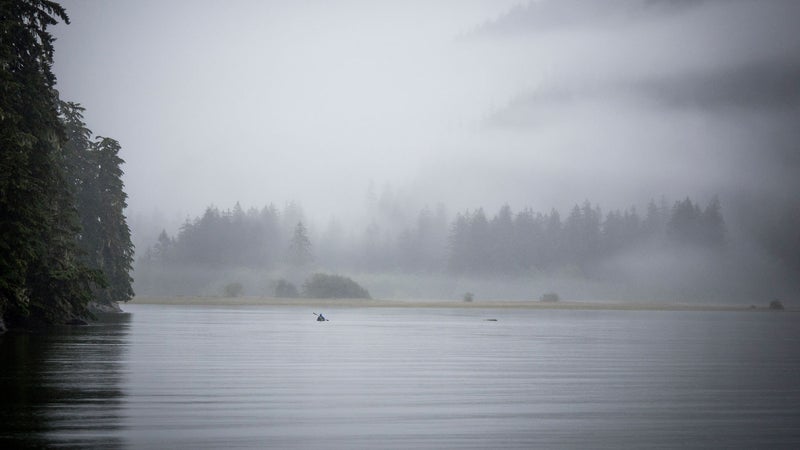
Prevalent sea-mists intensify where the river’s sweetwater meets salt at Burroughs Bay. The lower Unuk and its estuary lie within Misty Fjords National Monument. Designated by President Carter in 1978, the proclamation reads in part: “Misty Fiords is unique in that the area includes wildlife representative of nearly every ecosystem in Southeast Alaska, most notably bald eagles, brown and black bears, moose, wolves, mountain goats, and Sitka black-tailed deer. Misty Fiords is a major producer of all five species of Pacific salmon and is especially important for king salmon. Numerous other saltwater, freshwater and anadromous fish species and shellfish are plentiful in this area, which is an extraordinarily fertile interface of marine and freshwater environments.”
July 19, Day Eleven
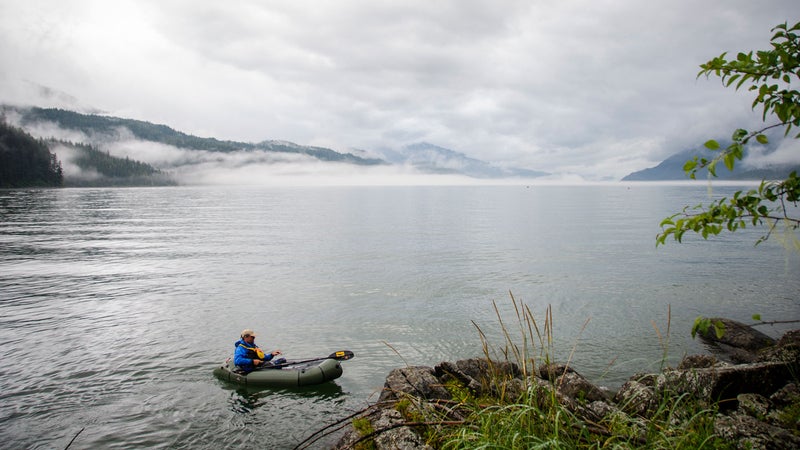
On reaching our float plane rendezvous at the coast, the GPS said we’d traveled one hundred miles on the dot. Over 10 days, we’d struggled and reveled in one of North America’s most pristine, fertile, and least-visited valleys. To bear witness to such a place is an honor. To consider it is under threat by our own species, to the detriment of the same, is unsettling.
Aftermath

Three weeks after our Unuk expedition, a disaster at Mt. Polley mine in central B.C. dumped 3.8 billion gallons of mining waste into the salmon-rich Fraser River watershed, covering salmon spawning beds with a toxic slurry, the full effects of which won’t be understood for decades. One immediate effect, however, was that for the first time in their 10,000-plus year history, First Nations people of the area did not fish the summer salmon run, for fear of contamination.��


